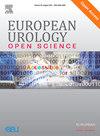Personalised Prostate Cancer Diagnosis: Evaluating Biomarker-based Approaches to Reduce Unnecessary Magnetic Resonance Imaging and Biopsy Procedures
IF 3.2
3区 医学
Q1 UROLOGY & NEPHROLOGY
引用次数: 0
Abstract
Background and objective
Efforts made over the last decade for the detection of prostate cancer (PCa) have revolutionised disease diagnostics, and implementation of prebiopsy magnetic resonance imaging (MRI) has received widespread acceptance. However, universal adoption of prebiopsy MRI and the benefits achieved have been limited by availability and equivocal MRI findings. This review aims to evaluate the latest evidence on the role of existing PCa risk calculators (RCs), and blood and urinary biomarkers as part of the diagnostic algorithm to improve the diagnosis of clinically significant PCa (csPCa) and reduce unnecessary MRI procedures and biopsies. We will also evaluate the potential of prostate-specific membrane antigen (PSMA) positron emission tomography (PET) to enhance sensitivity and specificity for PCa diagnosis, complement MRI, and refine biopsy strategies within the diagnostic pathway.
Methods
We performed a narrative review using the PubMed/MEDLINE database, which included papers published between January 2014 and June 2024. The outcome measures included rates of reduced diagnoses of nonsignificant PCa (defined as International Society of Urological Pathology [ISUP] grade group 1) cases, diagnoses of csPCa (defined as ISUP grade group ≥2) cases missed, and MRI scans and prostate biopsies avoided.
Key findings and limitations
In men with abnormal prostate-specific antigen (PSA) levels, further risk stratification using RCs, or blood or urine biomarkers can reduce up to 16–51% MRI scans, while missing 1–16% csPCa cases. In case of equivocal MRI results or Prostate Imaging Reporting and Data System 3 lesions, RCs or biomarkers could reduce up to 72% of biopsies, while missing only 3–13% csPCa cases. PSMA PET has emerging potential to improve csPCa prediction in combination with MRI and may further reduce unnecessary biopsies. A limitation of this study is that this is a narrative but not a systematic review.
Conclusions and clinical implications
RCs and biomarkers have been demonstrated to enhance the performance and efficiency of MRI in detecting csPCa in men with elevated PSA levels. PSMA PET shows promise in detecting csPCa, complementing MRI and refining biopsy indications.
Patient summary
In men with a suspicion of prostate cancer, magnetic resonance imaging prostate scans are effective in predicting clinically relevant cancer, but challenges including availability and equivocal scans exist. A personalised approach by adding one or more of clinical risk calculators, blood or urine biomarkers, or even novel imaging techniques such as positron emission tomography scans may improve cancer prediction further and reduce unnecessary scans and biopsies.
个性化前列腺癌诊断:评估基于生物标志物的方法,减少不必要的磁共振成像和活检程序
本文章由计算机程序翻译,如有差异,请以英文原文为准。
求助全文
约1分钟内获得全文
求助全文
来源期刊

European Urology Open Science
UROLOGY & NEPHROLOGY-
CiteScore
3.40
自引率
4.00%
发文量
1183
审稿时长
49 days
 求助内容:
求助内容: 应助结果提醒方式:
应助结果提醒方式:


